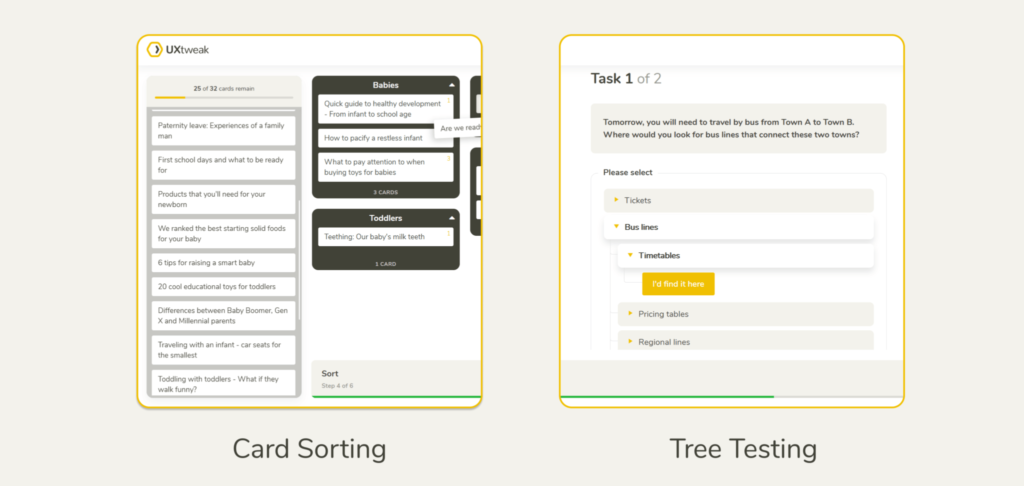FAQ
Tree testing and card sorting are both usability testing methods to learn how your users would structure content on your website or app. Card sorting is used to create an effective information architecture and tree testing is used to validate the effectiveness of an existing structure. While card sorting is a generative exercise tree testing is an evaluating exercise. They are often used in succession but serve different purposes.
Card sorting is a technique to understand how users would sort information and tree testing helps ensure that the organization is indeed the best one. Card sorting is generative while tree testing is used to validate existing structures.
The three types of card sorting are open, closed and hybrid card sorting. In open card sorting there are no predefined categories, participants create and name them, while In closed card sorting the categories are predefined. In hybrid card sorting there are predefined categories, but participants can also create additional ones.
